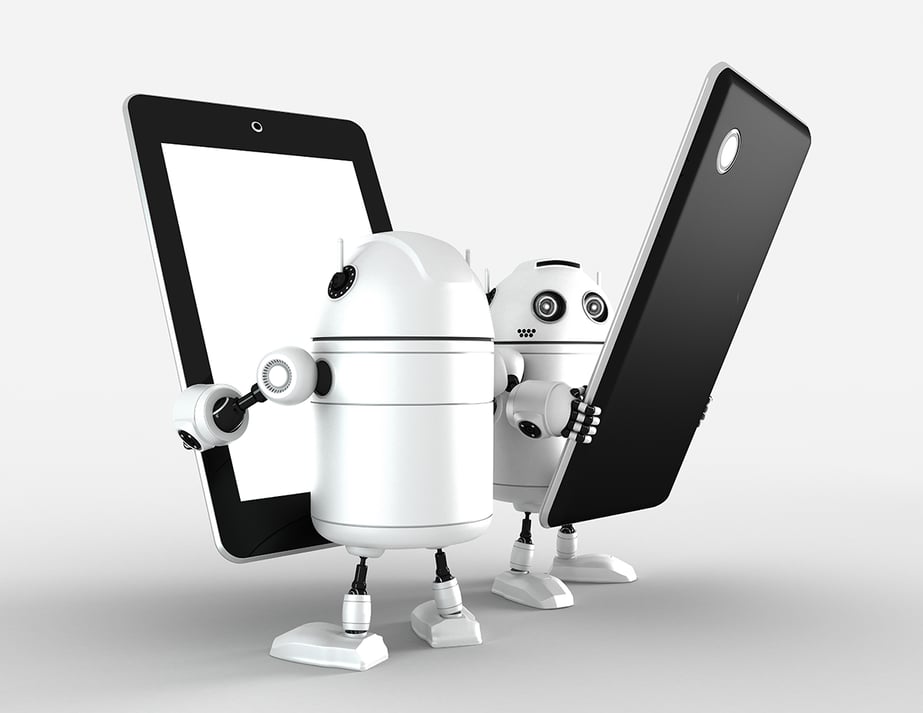 Artificial intelligence and machine translation have been the main buzzwords in the translation industry over the last few years. Almost everyone has used Google Translate or other machine translation services at some point – but are they suitable for professional translation service providers, or might they even make human translators redundant? And what makes machine translation different from human translations anyway? This post explores these and other questions in detail.
Artificial intelligence and machine translation have been the main buzzwords in the translation industry over the last few years. Almost everyone has used Google Translate or other machine translation services at some point – but are they suitable for professional translation service providers, or might they even make human translators redundant? And what makes machine translation different from human translations anyway? This post explores these and other questions in detail.
Gone are the days when Google Translate was considered so laughably bad that using it was taboo: now, if you aren’t using online translation services, you’re in danger of being left behind. That applies to international businesses, and of course it’s a huge issue for translation agencies too. The question of whether human beings are needed in the translation process at all keeps cropping up – perhaps unsurprisingly, given that Google can produce text in any language in a matter of seconds.
Man and machine together
The answer to that question is “yes”. The term “machine translation” (MT) is actually a bit misleading, because human beings are very much still involved: professional translation service providers never talk about MT without also including PE (post-editing). When using machine translation and post-editing, what matters is that the machine doesn’t replace the human translator. Instead, the machine is integrated into the translation process and pre-translates the text for the translator, who then reads through the MT output (checking the source text to ensure the content has been translated correctly) and makes the necessary changes. This is what we mean by post-editing, and of course it involves using translation memories and term bases too.
Light post-editing
There are two levels of post-editing: full and light. With light post-editing, the aim is simply to produce a text that can be understood. Our view at MEINRAD is that this option is only suitable for texts where quality and style aren’t a priority, such as internal company memos when the recipient just needs to know roughly what they mean. For texts where quality and style do matter, we recommend full post-editing.
Full post-editing
Full post-editing involves a post-editor checking that the MT output has been translated correctly and can be clearly understood, and then making the necessary changes to remove any errors and fix any stylistic issues. The final result is an accurate, easy-to-understand, stylistically appropriate text with the correct syntax, grammar and punctuation – just as you would expect to be produced by a conventional human translation.
And a human translation is...?
By human translation we mean a translation produced solely by a human translator. Of course term bases, translation memories and CAT tools can (and should) be used – but no machine translation engines are involved.
What machine translation can do – and what it can’t do
There are various ways to produce a translation, and a good language service provider will consult with the clients (and possibly the translators as well) to decide on the right option. A key service they can offer is assessing whether a text is suitable for MT+PE. It is now widely used with technical texts, for instance, and has been demonstrated to save both time and money. However, creative marketing texts are best left to specialist human translators. Although MT engines are getting better and better, these types of texts are more than the sum of their words – and that’s where MT engines struggle. They can’t read between the lines, recognize context, identify cultural references and puns or notice typos, so they’re unlikely to reproduce the intended meaning of the source text. That means human specialist expertise will be required.
What are post-editors expected to do?
Although the MT engine doesn’t replace the translator, it does change their role – hence the term post-editor. That is, post-editors are the same people who do human translations, with the same specialist expertise, training and experience. ISO 18587 (the international standard for post-editing) requires the following:
- Translation expertise
- In-depth knowledge of the source and target language
- Research and information processing skills
- Cultural knowledge
- Technical expertise
- In-depth knowledge of the respective subject matter
- Familiarity with machine translation systems
- Good judgement as to whether MT is suitable for a particular text
Our experience has also shown that post-editors need one ability above all others: knowing when to leave things as they are. It’s often tempting for a post-editor to rewrite texts in their own style, which can negate the key time-saving benefit of MT. “If it ain’t broke, don’t fix it”, as they say.
If you like the sound of quick, high-quality translations that offer great value for money, speak to us and we’ll help you assess whether your texts are suitable for machine translation and post-editing.
Main image: © Storyblocks

